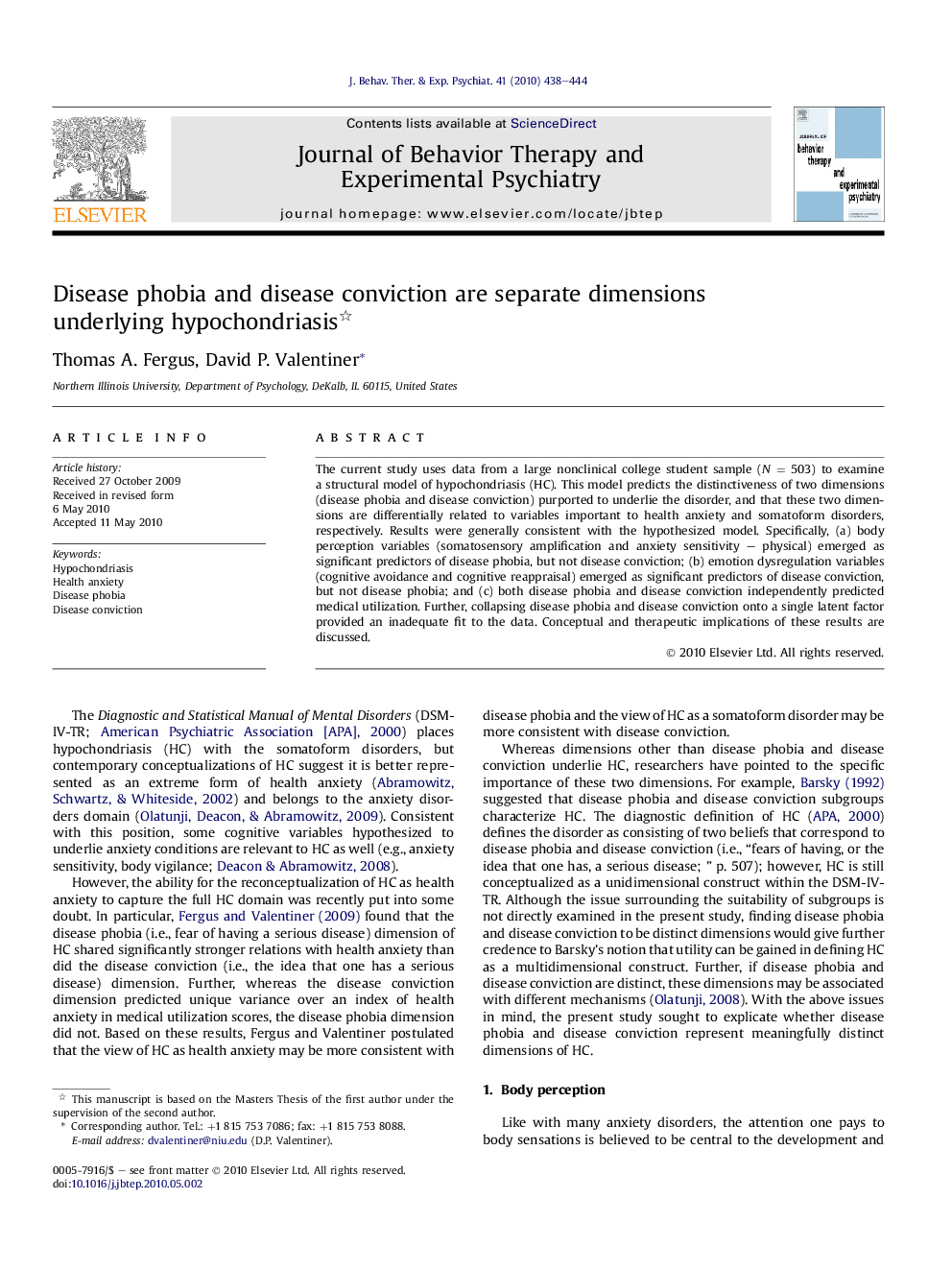| Article ID | Journal | Published Year | Pages | File Type |
|---|---|---|---|---|
| 910475 | Journal of Behavior Therapy and Experimental Psychiatry | 2010 | 7 Pages |
The current study uses data from a large nonclinical college student sample (N = 503) to examine a structural model of hypochondriasis (HC). This model predicts the distinctiveness of two dimensions (disease phobia and disease conviction) purported to underlie the disorder, and that these two dimensions are differentially related to variables important to health anxiety and somatoform disorders, respectively. Results were generally consistent with the hypothesized model. Specifically, (a) body perception variables (somatosensory amplification and anxiety sensitivity – physical) emerged as significant predictors of disease phobia, but not disease conviction; (b) emotion dysregulation variables (cognitive avoidance and cognitive reappraisal) emerged as significant predictors of disease conviction, but not disease phobia; and (c) both disease phobia and disease conviction independently predicted medical utilization. Further, collapsing disease phobia and disease conviction onto a single latent factor provided an inadequate fit to the data. Conceptual and therapeutic implications of these results are discussed.
